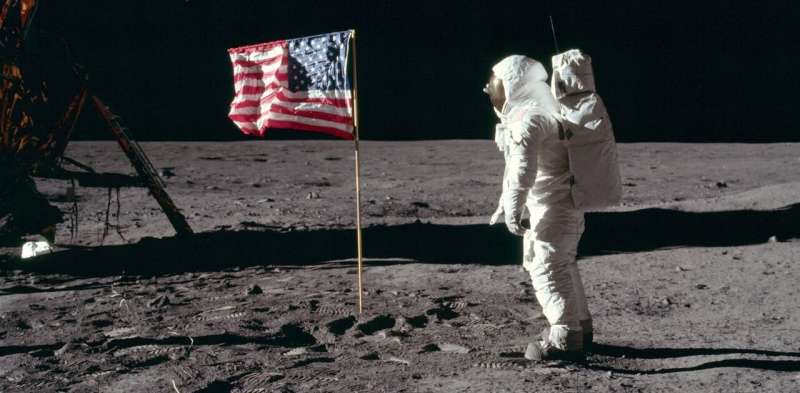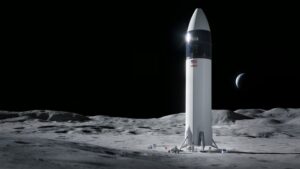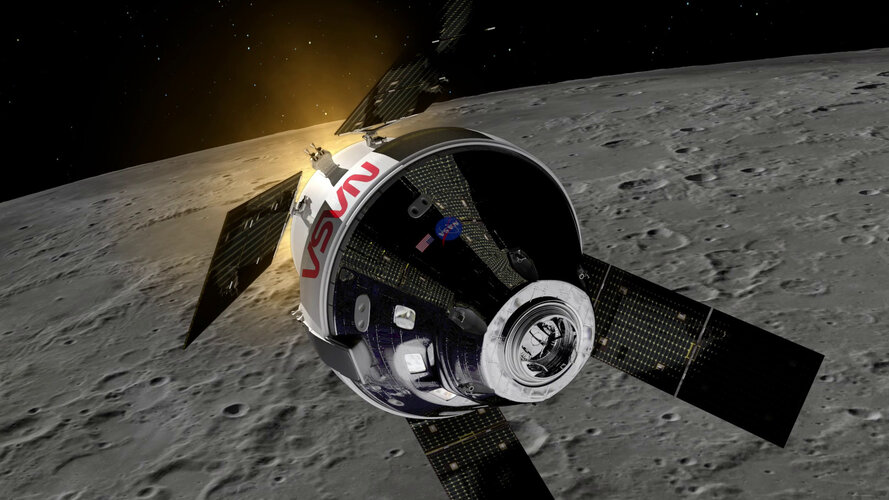Kacific supports Vodafone PNG for new mobile network into rural areas
Wednesday, 24 August 2022 13:21 Kacific Broadband Satellites Group (Kacific) has partnered with Vodafone PNG to deploy the satellite operator's Mobile Backhaul services, helping to greatly expand Vodafone PNG's voice and 3G/4G data network into rural areas of Papua New Guinea.
Vodafone PNG based in Papua New Guinea, part of the Amalgamated Telecom Holdings (ATH) Group of companies from Fiji, successfully launched in Apri
Kacific Broadband Satellites Group (Kacific) has partnered with Vodafone PNG to deploy the satellite operator's Mobile Backhaul services, helping to greatly expand Vodafone PNG's voice and 3G/4G data network into rural areas of Papua New Guinea.
Vodafone PNG based in Papua New Guinea, part of the Amalgamated Telecom Holdings (ATH) Group of companies from Fiji, successfully launched in Apri NASA using astronomical forensics to study exploded star
Wednesday, 24 August 2022 13:21 A NASA-funded sounding rocket mission will observe the remnants of an exploded star, uncovering new details about the eruption event while testing X-ray detector technologies for future missions. The High-Resolution Microcalorimeter X-ray Imaging, or Micro-X, experiment will launch Aug. 21 from the White Sands Missile Range in New Mexico.
The mission's target of study is some 11,000 light-
A NASA-funded sounding rocket mission will observe the remnants of an exploded star, uncovering new details about the eruption event while testing X-ray detector technologies for future missions. The High-Resolution Microcalorimeter X-ray Imaging, or Micro-X, experiment will launch Aug. 21 from the White Sands Missile Range in New Mexico.
The mission's target of study is some 11,000 light- Ready for its close-up: New technology sharpens images of black holes
Wednesday, 24 August 2022 13:21 When scientists unveiled humanity's historic first image of a black hole in 2019 - depicting a dark core encircled by a fiery aura of material falling toward it - they believed even richer imagery and insights were waiting to be teased out of the data.
Simulations predict that, obscured by that bright orange glow, there should exist a thin, bright ring of light created by photons flung aro
When scientists unveiled humanity's historic first image of a black hole in 2019 - depicting a dark core encircled by a fiery aura of material falling toward it - they believed even richer imagery and insights were waiting to be teased out of the data.
Simulations predict that, obscured by that bright orange glow, there should exist a thin, bright ring of light created by photons flung aro New study examines how many moons an earth-mass planet could host
Wednesday, 24 August 2022 13:21 A new study by a trio of physics researchers attempts to quantify how many moons the Earth, or an exoplanet with the mass of Earth orbiting a Sun-like star, could host in its orbit. Their findings: Anywhere from three to seven, depending on the moon's mass.
The study, titled "Moon-packing around an Earth-mass planet", was published in the August 1 online edition of the Monthly Notices of t
A new study by a trio of physics researchers attempts to quantify how many moons the Earth, or an exoplanet with the mass of Earth orbiting a Sun-like star, could host in its orbit. Their findings: Anywhere from three to seven, depending on the moon's mass.
The study, titled "Moon-packing around an Earth-mass planet", was published in the August 1 online edition of the Monthly Notices of t Orbex to hire fifty new staff over next six months, in final countdown to UK rocket launch
Wednesday, 24 August 2022 13:21 UK-based launch services company Orbex is hiring an additional fifty staff members over the next six months. The new team members will support the company's final push to prepare for the first vertical rocket launch from UK soil over the coming months.
Many of the new roles will support 'integrated testing' of the complete rocket at the Orbex LP1 launch platform test facility at Kinloss. T
UK-based launch services company Orbex is hiring an additional fifty staff members over the next six months. The new team members will support the company's final push to prepare for the first vertical rocket launch from UK soil over the coming months.
Many of the new roles will support 'integrated testing' of the complete rocket at the Orbex LP1 launch platform test facility at Kinloss. T Case solved: missing carbon monoxide was hiding in the ice
Wednesday, 24 August 2022 13:21 Astronomers frequently observe carbon monoxide in planetary nurseries. The compound is ultra-bright and extremely common in protoplanetary disks - regions of dust and gas where planets form around young stars - making it a prime target for scientists.
But for the last decade or so, something hasn't been adding up when it comes to carbon monoxide observations, says Diana Powell, a NASA Hubb
Astronomers frequently observe carbon monoxide in planetary nurseries. The compound is ultra-bright and extremely common in protoplanetary disks - regions of dust and gas where planets form around young stars - making it a prime target for scientists.
But for the last decade or so, something hasn't been adding up when it comes to carbon monoxide observations, says Diana Powell, a NASA Hubb China's space tracking ship sails for monitoring missions
Wednesday, 24 August 2022 13:21The global hunt for dark matter has arrived in Australia at the Stawell Underground Physics Laboratory
Wednesday, 24 August 2022 13:21 Located 1km underground in the Stawell Gold Mine, the first dark matter laboratory in the southern hemisphere is preparing to join the global quest to understand the nature of dark matter and unlock the secrets of our universe.
Recently unveiled, the Stawell Underground Physics Laboratory (SUPL) will be the new epicentre of dark matter research in Australia.
Lead researcher on the pr
Located 1km underground in the Stawell Gold Mine, the first dark matter laboratory in the southern hemisphere is preparing to join the global quest to understand the nature of dark matter and unlock the secrets of our universe.
Recently unveiled, the Stawell Underground Physics Laboratory (SUPL) will be the new epicentre of dark matter research in Australia.
Lead researcher on the pr Negotiations are underway to avoid conflict and damage to spacecraft between international moon missions
Wednesday, 24 August 2022 12:36
It's been 50 years since humans last visited the moon, and even robotic missions have been few and far between. But the Earth's only natural satellite is about to get crowded.
At least six countries and a flurry of private companies have publicly announced more than 250 missions to the moon to occur within the next decade. Many of these missions include plans for permanent lunar bases and are motivated in large part by ambitions to assess and begin utilizing the moon's natural resources. In the short term, resources would be used to support lunar missions, but in the long term, the moon and its resources will be a critical gateway for missions to the broader riches of the solar system.
But these lofty ambitions collide with a looming legal question. On Earth, possession and ownership of natural resources are based on territorial sovereignty.
Astrobotic wins NASA funding for CubeRover mission
Wednesday, 24 August 2022 12:35
Astrobotic, a company developing landers and other lunar technologies, has secured NASA funding to fly a small rover on a future mission to test its ability to survive the lunar night.
The post Astrobotic wins NASA funding for CubeRover mission appeared first on SpaceNews.
Scout Space and university labs win contracts for on-orbit servicing project
Wednesday, 24 August 2022 12:00
Scout Space, a startup developing technologies for in-space services, won two U.S. Space Force contracts in support of the debris-cleanup project known as Orbital Prime
The post Scout Space and university labs win contracts for on-orbit servicing project appeared first on SpaceNews.
Starship uncrewed lunar lander test a “skeleton” of crewed lander
Wednesday, 24 August 2022 09:58
A SpaceX Starship that will land on the moon an on uncrewed test flight may only be a “skeleton” of the version of that will carry people on the Artemis 3 mission, NASA says.
The post Starship uncrewed lunar lander test a “skeleton” of crewed lander appeared first on SpaceNews.
Europe to support Artemis CubeSats in return to the Moon
Wednesday, 24 August 2022 07:51
Drought causes Yangtze to shrink
Wednesday, 24 August 2022 07:25 Image:
A record-breaking drought has caused parts of the Yangtze River to dry up – affecting hydropower, shipping routes and limiting drinking water supplies. Images captured by the Copernicus Sentinel-2 mission show a comparison of the Yangtze and Jialing rivers, near Chongqing, over the last three years.
Image:
A record-breaking drought has caused parts of the Yangtze River to dry up – affecting hydropower, shipping routes and limiting drinking water supplies. Images captured by the Copernicus Sentinel-2 mission show a comparison of the Yangtze and Jialing rivers, near Chongqing, over the last three years. 
